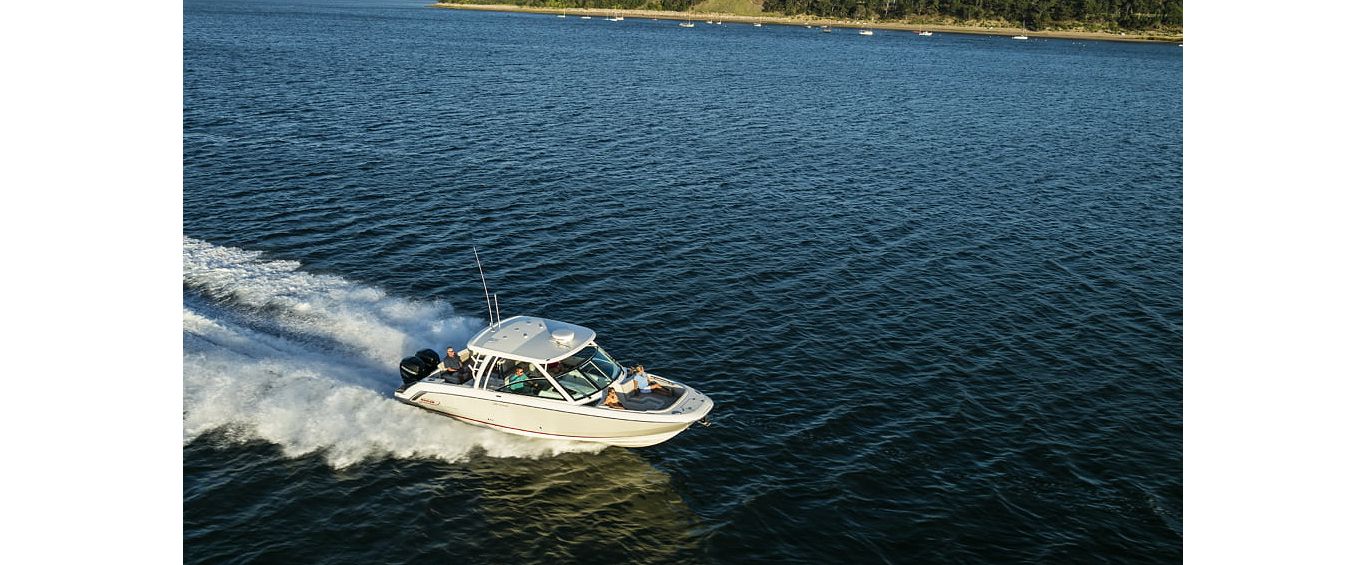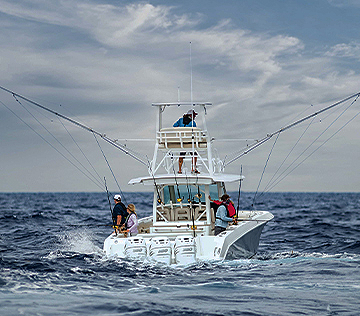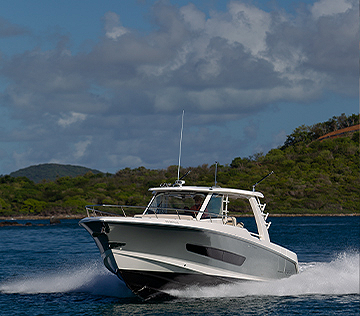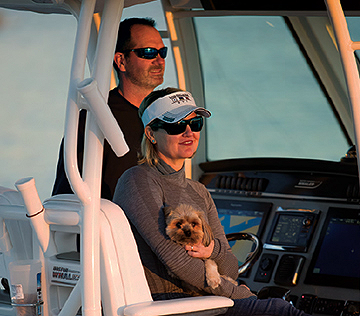
Maintain your hull's gleaming shine with cleaning & maintenance tips from the bottom coating experts at Awlgrip.
In a previous issue of Navigator, we described how hull paint products from Awlgrip feature the latest advances in technology. Topcoats from the Awlgrip and Awlcraft ranges, for example, work to keep your hull protected and looking good as new.
As a follow-up, we asked Awlgrip to provide some tips for getting the most out your topcoat. By taking a few simple precautions when cleaning and caring for your hull, you’ll benefit from lasting performance and maximum shine — for the brilliant-looking finish your Whaler deserves.
Dos:
- Wash the surface of your boat regularly with Awlwash concentrate and water. Regular cleaning will avoid buildup, which can slowly attack your topcoat and prematurely age the coating.
- Always thoroughly rinse all surfaces with fresh water after cleaning with detergents or solvents. Latent solvent residue can attack the topcoat, while detergent residue will attract dirt.
- Use distilled white vinegar and hot water to remove stubborn salt stains.
- Use Awlcare, Awlgrip’s protective polymer sealer, to help protect the coating on your Whaler from UV damage, acid rain and other environmental pollutants, and to make maintenance easier. It can also be used by hand only to remove stubborn diesel soot stains.
Don’ts:
1. In general, do not wax. Wax buildup ages and yellows very rapidly, creating the need to maintain the wax and causing the topcoat to appear yellow. Wax buildup also collects dirt, increasing maintenance.
2. Do not use abrasives, scratch pads or polishing compounds. Scratching the surface gives dirt a place to cling while wearing out the resin layer. Using abrasives of any kind will reduce the overall life of the finish and voids the Awlgrip Limited Warranty.
3. Do not allow contact between the Awlgrip, Awlcraft 2000, or Awlcraft SE Topcoat and teak cleaners. Most teak cleaners contain acids or caustic agents that stain and discolor your topcoat.
4. Do not use strong solvents (e.g. lacquer thinner or acetone) to clean Awlcraft 2000, Awlbrite Clear or Awlspar Varnish.
5. Do not allow wet equipment (e.g. seat cushions, coils of line, sails, sail covers, coolers) to trap and hold moisture against Awlgrip Topcoats. This condition can result in blistering or delamination of the Awlgrip, Awlcraft 2000, or Awlcraft SE Topcoat.
6. Do not use acrylic Teflon® coatings over an Awlgrip, Awlcraft 2000, or Awlcraft SE Finish. Use of these coatings void the Awlgrip Limited Warranty.
7. Do not “shrink wrap” or tightly bind Awlgrip, Awlcraft 2000, or Awlcraft SE Topcoat surfaces with plastic wrappings.
When tarping a boat for storage, the cover system should be ventilated to allow the coating system to breathe. Covers and tarps, whether synthetic or natural fiber, should not be pulled tight to surfaces painted with Awlgrip, Awlcraft 2000, or Awlcraft SE Topcoat. This condition can trap and hold moisture on the surface and may result in loss of gloss, blistering or delamination of the topcoat. Caution should also be used to ensure that the tarp does not chafe against the surface. Such chafing, especially when accompanied by airborne dirt, can abrade the surface and cause premature loss of gloss.
Simple precautions and a little TLC are all it takes to maintain your hull’s beauty, season after season.
To learn more, visit awlgrip.com.
--
This is for general information purposes only. Your use or reliance on any of the information in this Blog is solely at your own risk. Under no circumstance will we have any liability for any loss or damage of any kind incurred as a result of the use of any of the information provided.
Options and features mentioned subject to change. Please confirm availability of all accessories and equipment with an authorized Boston Whaler Dealer.



